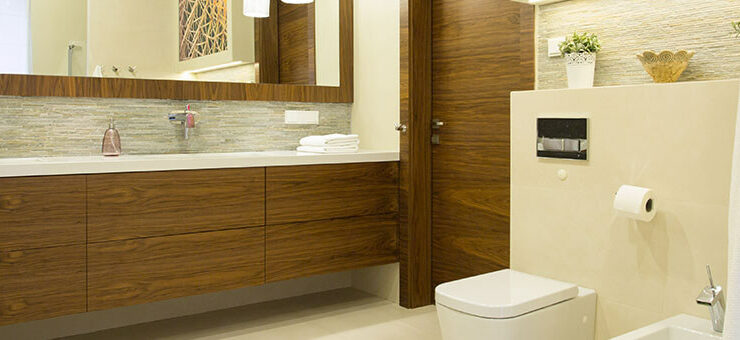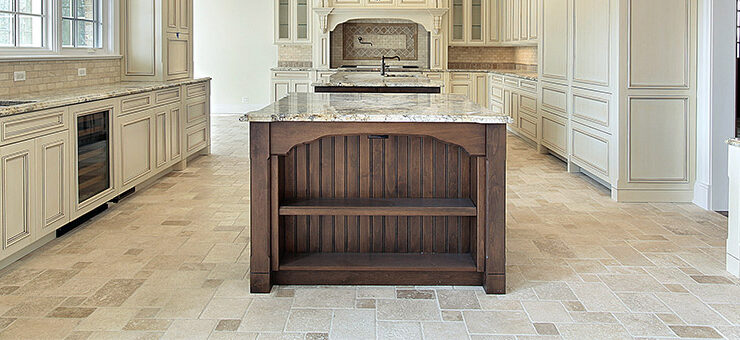Quartz countertops used to be found only in the most exclusive of homes. That’s not true anymore.
Quartz and other manufactured stones are becoming more popular throughout kitchens and bathrooms of all kinds. As more manufacturers and brands pop up, quartz is more accessible than ever.
Between the different brands, there are similarities and differences. First, let’s take a look at what all quartz and manufactured stone have in common.
Quartz Brand Similarities
All quartz countertops come from the Breton company’s original Bretonstone technology.
It was created by Marcello Toncelli about 50 years ago. Here are the additional similarities.
- Composition. All quartz countertops have a mineral content of 93%. The minerals give quartz its look and feel.
- Hardness. The manufacturing process saves the hardest mineral – quartz – and eliminates impurities and softer substances. All quartz countertops are harder than natural granite.
- Low water absorption rate. Quartz is nonabsorbent.
- Heat resistance. The minerals that compose quartz are 100% resistant to heat, up to 360 degrees and only for a short amount of time. But keep in mind – quartz is NOT indestructible.
- Visible seams. Usually, the size of the countertop demands that two slabs of quartz be put together. Even the most skilled installer will still leave a visible seam.
Quartz Brand Differences
The differences between the brands are things like:
- Designs. These are the biggest differences between quartz brands. Design includes color, size, shape of the minerals, streaks, and striations.
- Slab sizes. Because quartz usually needs to be seamed, contractors prefer to purchase larger slabs as opposed to smaller ones.
- Warranties. While all quartz brands are guaranteed, the length, transferability, and limitations of the warranty will differ.
- Prices. This is probably the most predictable difference in quartz brands.
Quartz manufacturers
These are the companies who make quartz and manufactured stone.
Cambria
This Minnesota-based company started making quartz in 2000.
Cambria is the only American company that is in the quartz business and it’s known for offering the largest selection of colors, edges, designs, and slab sizes. Their quartz surfaces are also considered by many to be the most natural looking.
An interesting aspect of Cambria is that it can’t be bought at big box home stores but can only be purchased through kitchen and bath dealers or builders, designers, and architects.
Caesarstone
This company is the self-proclaimed “original” quartz manufacturer. They’ve been in business since 1987 and their headquarters are in Israel. One hallmark of this brand is cutting-edge design.
For example, the Concetto Collection offers 10 surfaces that use semi-precious stones. Their Motivo Collection has surfaces created by embossing crocodile skin and lace for texture.
Silestone
Silestone is a product of Spain.
The defining characteristic of Silestone is that it’s available in solid colors, which aren’t offered by other brands.
Another difference from other brands is Silestone’s flexibility. It can be used for sinks, vanities, and more. This brand also offers the best warranty of the three major quartz manufacturers.
Quality you can trust
No matter which brand you choose to use in your kitchen or bathroom, you can count on enjoying the beautiful coloring and durability for many years to come.
If quartz is the material that’s just right for your space, talk to a trusted contractor who can walk you through the process for taking your countertops from drab to pizazz.
For help remodeling your home, contact your local experts VKB Kitchen and Bath.
Frequently Asked Questions
Q1: What are the similarities among different quartz brands?
Answer: All quartz countertops share common features, including a composition of 93% minerals, high hardness, low water absorption rate, heat resistance up to 360 degrees (for a short time), and visible seams due to the necessity of joining multiple slabs.
Q2: What are the main differences between quartz brands?
Answer: The main differences between quartz brands lie in their designs, slab sizes, warranties, and prices. Design encompasses factors like color, size, mineral shape, streaks, and striations, while warranties vary in length, transferability, and limitations.
Q3: Which companies are major manufacturers of quartz countertops?
Answer: Three major manufacturers of quartz countertops are Cambria, Caesarstone, and Silestone. Cambria is known for its wide selection of colors, edges, designs, and slab sizes. Caesarstone focuses on cutting-edge design, offering unique surfaces like those from the Concetto and Motivo collections. Silestone stands out for its solid color options and flexibility for various applications.
Q4: What is unique about Cambria quartz?
Answer: Cambria quartz is unique for its extensive color options, natural-looking surfaces, and availability exclusively through kitchen and bath dealers or professionals like builders, designers, and architects.
Q5: Why might someone choose Silestone quartz for their countertops?
Answer: Someone might choose Silestone quartz for its solid color choices, which are not commonly offered by other brands, as well as its flexibility for use in sinks, vanities, and other applications. Silestone also offers a robust warranty compared to other major quartz manufacturers.





